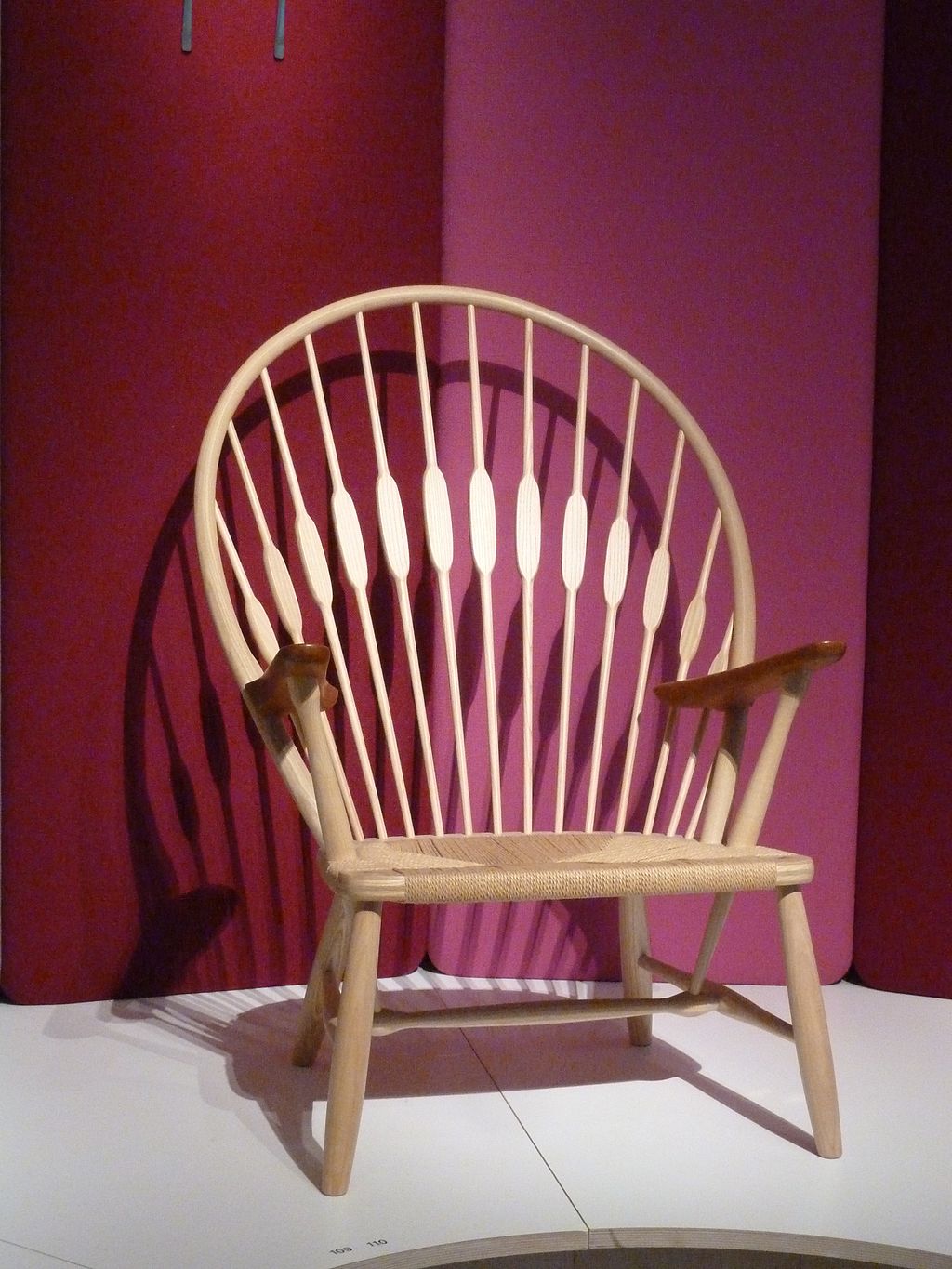Hans Jørgensen Wegner (April 2, 1914– January 26, 2007) is a world-renowned Danish designer and architect. His high quality and thoughtful work contributed to the international popularity of mid-century Danish design.

Image source: https://www.archiproducts.com/it/designer/hans-j-wegner
Considered as one of the most influential designers of the Scandinavian area,his fame can be attributed to his woodwork pieces and for being extremely productive. Wegner rose to international prominence as one of a handful of Danes who seized the design world’s attention with a fresh aesthetic of sculptural and organic modern furniture.
A Young Talent
The son of a cobbler, Wegner was born in 1914 in Tønder, a town in southern Denmark. When he was just 14 years old he began his apprenticeship with Danish master cabinet-maker H. F. Stahlberg, and soon discovered a feeling for woodworking and an affinity towards the material. After completing his apprenticeship at 17, he remained in the workshop for three years before joining the army. After serving in the military he moved to Copenhagen and attended the School of Arts and Crafts from 1936 to 1938, before setting out as a furniture designer. In 1943 Wegner established his own design studio and began creating a series of numerous chairs for several furniture companies.

Image source: https://en.wikipedia.org/wiki/Hans_Wegner#/media/File:H.F._Stahlberg_on_%C3%98stergade_13_in_T%C3%B8nder.jpg
Organic Functionality
Wegner’s is often acknowledged as one of the designers who gave more aestheticism and flexibility to the functionalist movement.
His style is often described as Organic Functionality, a modernist school with particular emphasis on functionality. This school of thought arose primarily in Scandinavian countries with contributions by Poul Henningsen, Alvar Aalto, and Arne Jacobsen. Following the principles of Organic Functionality, he designed over 500 different chairs in his lifetime, more than one-fifth of which were put into mass production while many of them have become recognizable design icons.
Image source: https://commons.wikimedia.org/wiki/File:Aarhus_ratusz_fragment.JPG
Respect for Wood
Often referred to as the master of the chair, Wegner created almost 500 seats in his lifetime, many of which are considered true masterpieces of design. Probably, the success of his designs depends on the core of Wegner’s legacy: his focus on showing the inner soul of furniture pieces through a simple and functional exterior.
Wegner’s background as a cabinetmaker, in fact, gave him a deep understanding of how to integrate exacting joinery techniques with exquisite form, realizing the perfect combination with form and purpose. His aesthetic was also based on a deep respect for wood and its characteristics, and a vast curiosity about other natural materials that enabled him to bring an organic, natural softness to formalistic minimalism.

Wegner’s Design Characteristics
Many of Wegner’s wooden chairs are characterized by traditional joinery techniques including finger joints, mortise and tenons, and sculpted elements such as armrests and seat supports. Wegner also utilized traditional construction for upholstered pieces, and often mixed materials such as solid wood, upholstery, caning, plywood, metal, and papercord.
Joining cabinetmaker-guild traditions of high craftsmanship, Wegner’s masterpieces are all characterized by quality and comfort with modernist principles of simplicity and graphic beauty.

Info source: https://search.creativecommons.org/photos/018f31d3-d378-42d8-9703-209ad46bf904 by ninahale
Hans Wegner’s Most Famous Works
Hans Wegner left his mark on the history of design thanks to the creation of some of the most famous chairs of the 20th century. Among the most popular it’s worth mentioning the Peacock Chair (1947), the Round Chair (1949), the Wing Chair (1960) and the “OX” and “Papa Bear” armchairs.
Probably the most famous of all, the Peacock Chair is the ideal result of Wegner’s conscious choices of modern lines. The chair has a characteristic backrest, to which it owes its name, sweeping and spacious with its extravagant shape is the first feature to be noticed and contributes to the ergonomic aesthetics of the piece. The flat part of the sticks, which gives it its peacock-like appearance, are placed where the shoulder-blades meet the chair’s back.

Image source: https://en.wikipedia.org/wiki/Hans_Wegner#/media/File:Peacock_chair_-_Designmuseum_Danmark.jpg
Another celebrated chair design, realized in 1949, was also the Wishbone Chair.
With a Y-shaped back split and a curved back and armrest, it is an understated work of simplicity and comfort. The back legs are steam-bent into a curve that tapers to join a circular steam-bent back rail. Its graceful shape hint at both East Asian design and modernist ideals and it is still produced today by the Danish firm Carl Hansen & Son.

Image source: https://search.creativecommons.org/photos/c0d68a18-e8c2-490f-94d1-1cae3a9d9ff3 by Robert B. Moffatt
The Chair (or The Round Chair)
In the same year, 1949, another chair which had enormous success hit the market and soon became known simply as The Chair, or the Round Chair. It is a strikingly modern design, with a caned seat and a back and armrests made of one continuous semicircle of wood.

Image source: https://search.creativecommons.org/photos/b437a1b7-1c5e-4a12-9714-97bee3617718 by coffee shop soulja
Info sources:
https://www.carlhansen.com/en/designers/hans-j-wegner
https://en.wikipedia.org/wiki/Hans_Wegner
https://www.nytimes.com/2007/02/06/arts/design/06wegner.html?partner=permalink&exprod=permalink
https://www.danishdesignstore.com/products/wegner-pp550-peacock-chair-pp-mobler
https://www.carlhansen.com/en/collection/chairs/ch24/wishbone-chair-oak-black-nature/variant/701
https://www.carlhansen.com/en/collection/chairs/ch23/chair-oak-oil-nature/variant/616
